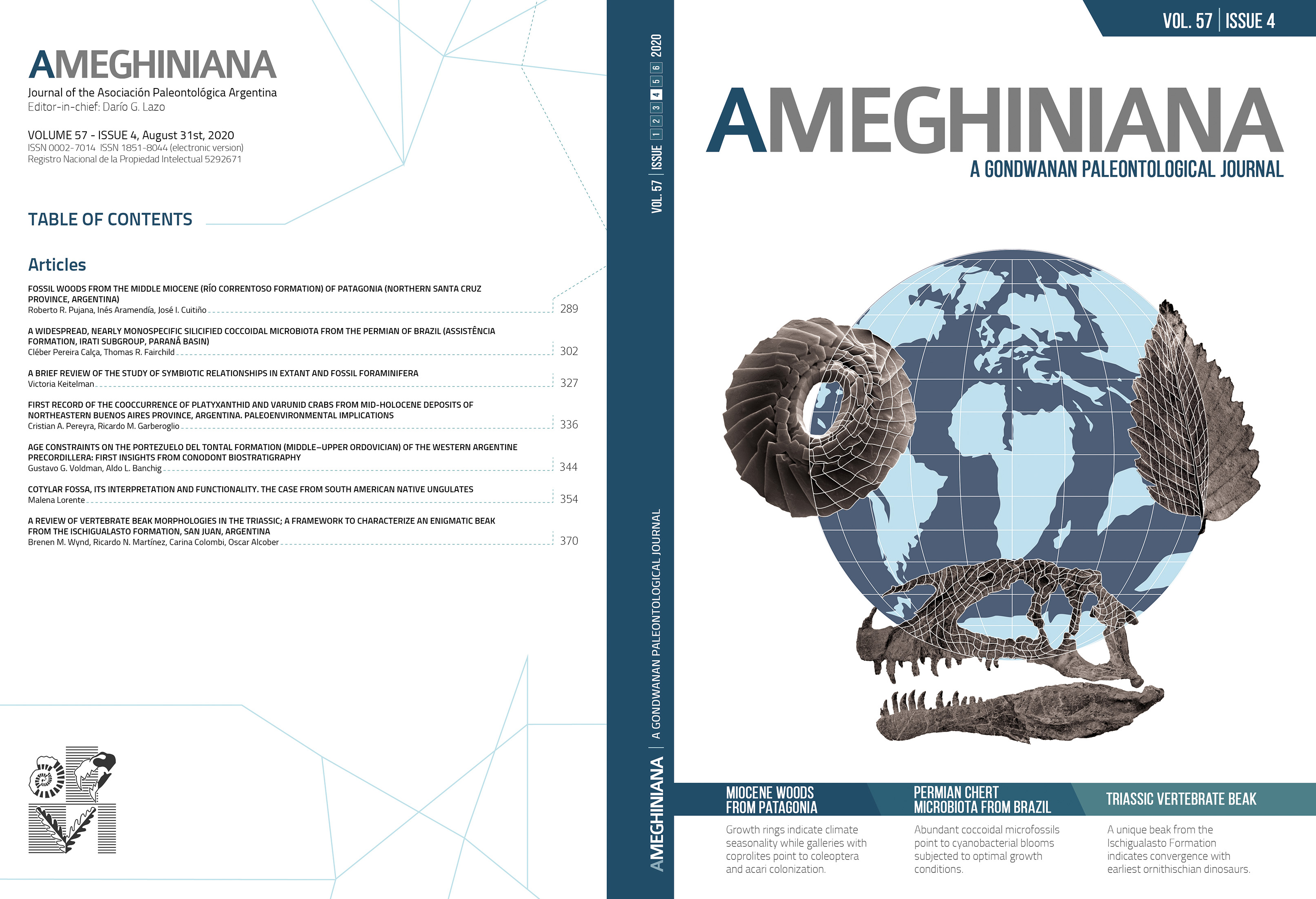COTYLAR FOSSA, ITS INTERPRETATION AND FUNCTIONALITY. THE CASE FROM SOUTH AMERICAN NATIVE UNGULATES
DOI:
https://doi.org/10.5710/AMGH.08.06.2020.3306Keywords:
Cotylar fossa, Meridiungulata, Resting behavior, Upper Tarsal JointAbstract
The cotylar fossa is a complex anatomical character in the astragalar medial malleolar facet. It represents a dynamic relationship between the astragalus and the tibia in the upper tarsal joint. The astragalus must accommodate the medial tibial malleolus when the tibia is in an extreme flexion. It is one of the three morphological synapomorphies considered for Afrotheria, although it is also a recurrent trait among different groups of mammals. Here, fossil South American Native Ungulates and extant mammals were surveyed to reevaluate how much this character is spread and how variable it is. Beyond afrotherians, it is observed that it also appears in primates, macropodid marsupials, laurasiatherian archaic ungulates, perissodactyls, pantodonts, and dinoceratans; it is also in some but not all of the extinct endemic ungulates from South America. No function has been suggested before for the presence of a cotylar fossa. The cotylar fossa could be an adaptation to a passive, rest related posture. Extreme flexion of the tibia/fibula over the foot happens when animal sits or lies down. Because of this, the cotylar fossa may not represent a synapomorphy of afrotherians but a homoplastic feature convergently developed several times. The cotylar fossa, as first described, is more characteristic of the order Primates than of any other taxa, including Afrotheria. But, there is more than one kind of cotylar fossa, and this variation could correspond to more than one cause, including phylogenetic constraints.Downloads
Published
Issue
Section
License
Authors publishing in Ameghiniana have the option of making their article freely available online. Authors opting for the Open Access must pay a fee of $300 (US dollars) to cover article-processing costs and to ensure the article is made open access. Please contact the Production Team after the acceptance of your manuscript if you are interested in making your article Open Access. This option implies by default a license Creative Commons Attribution Non-Commercial-NoDerivs License (CC BY NC ND). If your funding institution requires a different licensing option please communicate this to the Production Team after the acceptance of your manusctipt.











